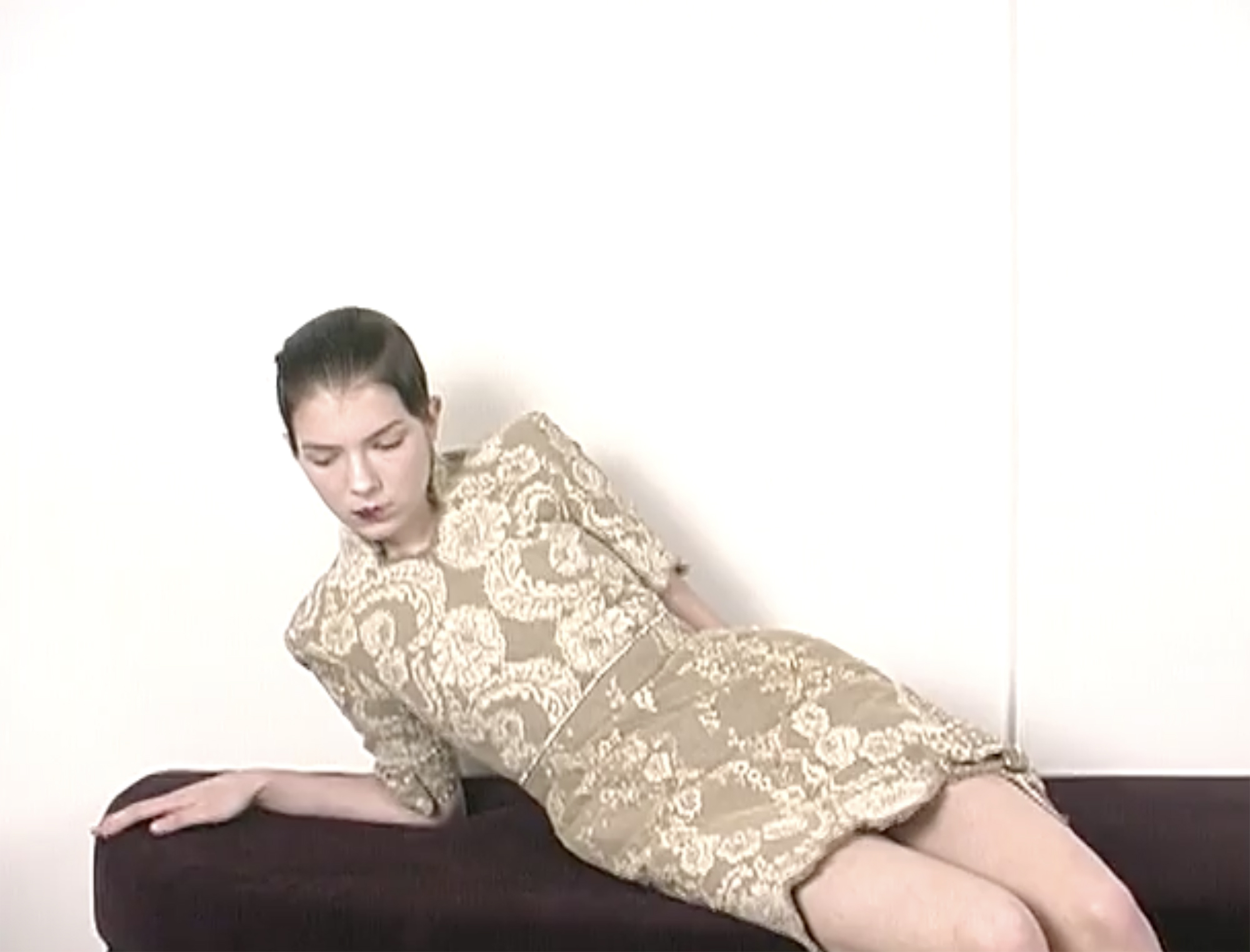…may be the last one still standing
Published in Nuda:Saga
Untitled (Night) by Ernst Yohji Jäger has left the sphere of the everyday. It plays out in the realm of fantasy. It’s not a stylized, static scene, but a snapshot of a journey – someone going somewhere. Against a backdrop of red trees, twirling in psychedelic patterns, a person in a long swirling red coat descends a staircase in the night. They’re carrying a luminous white pigeon. The painting is cut in half by a stone wall which follows the line of the horizon in the background. The sun’s just about to set and the sky is dark blue, but the scene is illuminated by another source of light, coming from outside the frame, casting a warm sheen over the painting’s lower half. The characteristic distemper shares similarities with Max Ernst’s apocalyptic landscape of Europe After the Rain II from 1940-1942. Around the person in the red coat, ghostlike, half transparent figures are going up the stairs, in the opposite direction.
From the beginning, surrealist artists and writers have been preoccupied with the notion of myth, but by the end of WWII and the years that followed this general focus turned into an almost feverish obsession. For the exhibition Le surrealisme en 1947, George Bataille, who described himself as the movement’s enemy from within, published the short text L’Absence de Mythe. The literary scholar Michael Richardson writes brilliantly about how Bataille had long been engaged with the enormous problem of reinstating myth into a de-mythed society. Ways in which the French philosopher suggested we restore culture’s lost mythos were for example, by creating new lore around the Place de la Concorde or by engaging in a ceremonial human sacrifice with a willing victim. The strategy was tohijack the already loaded historical knots and locations. But the text L’Absence de Mythe is otherwise quite disillusioned regarding the prospects of reviving imagination in a society that has cut its ties with its mythological foundation. He writes: “’Night is also a sun’, and the absence of myth is also a myth: the coldest, the purest, the only true myth.” This cold hard myth is to be understood as the misguided illusion that there is no myth left in our society. It is the prevailing myth since enlightenment and industrial revolution, that all myths have died. One last ruling myth of them all.
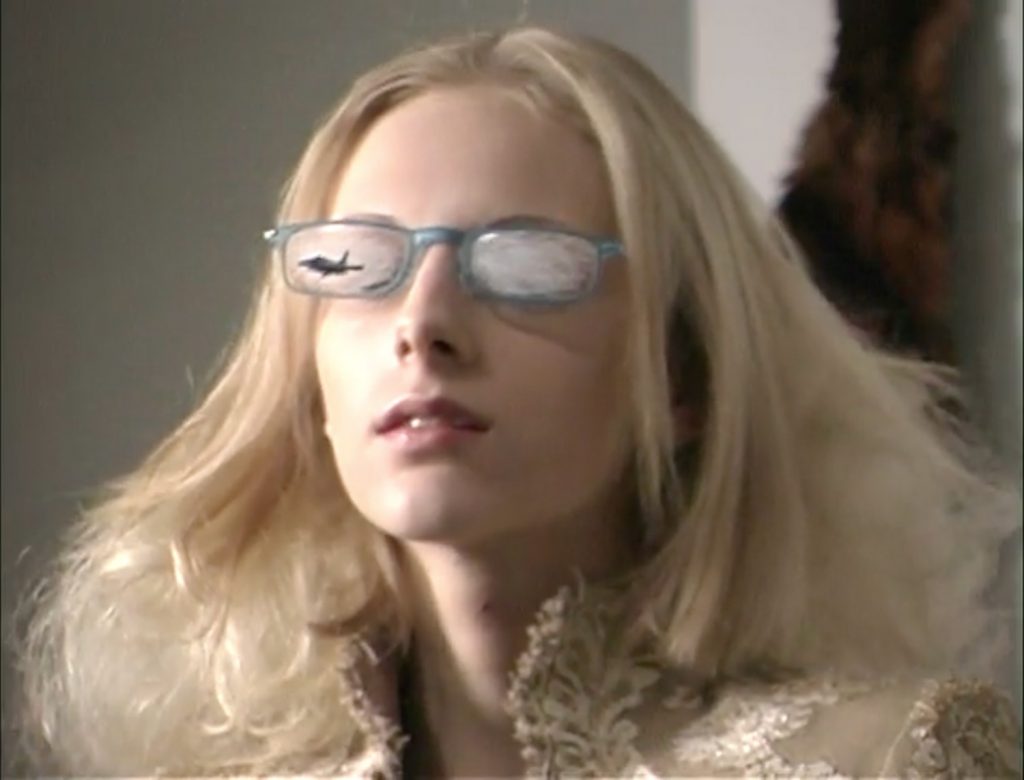
Not unlike the surrealist period, the contemporary seems surged by a similar obsession with myth, be it Instagram astrology, feminist witchcraft or magazines dedicated to sagas. This is fortified by the upturn of figurative art, a trend that’s prevailed for several years in contemporary art and many times carries surrealist traces in its motifs and artistic methods. It can be seen in the dream-logic of paintings by Julien Nguyen, Magnus Andersen and Emily Mae Smith or in sculptures by Isa Genzken, Henrik Olesen or Tora Schultz, which combine heterogeneous materials, readymades and found objects into surprising constellations.
In the last couple of years, I’ve found myself returning again and again to the seminal work of Bernadette Corporation. In part because it’s just pretty great, in part because it seems to me they understood something about our current late capitalism reality ahead of the rest of us. In their film Hell Frozen Over from 2000, a fashion photo shoot is used as a structuring element to piece together very different visual impressions, such as the pages of a fashion magazine or clippings on a mood board.
The film begins with the famous founder of the publishing house Semiotext(e), French-American literary critic Sylvére Lotringer (1938-2021), reading a poem about a frozen lake by the French symbolist poet Stéphane Mallarmé, while he himself is standing in the middle of a frozen lake. A pop-rock song plays in the background and the camera follows a snowmobile as it speeds over the ice while Lotringer talks undisturbed in the foreground, positioned close enough to the camera to make him an unfocused blur. The film takes shape as a temporal collage of moving images and sounds. A model wearing glasses is lying on top of a mirror to the sound of cold wind coming from the lake. The model’s glasses are painted white, making it impossible for her to see. Throughout the film it’s all about surfaces, in one way or another: a frozen lake, mirrors, blind-covered windows, overpainted glasses or glasses covered in foil. Hell Frozen Over treats surface as its mutating motif.
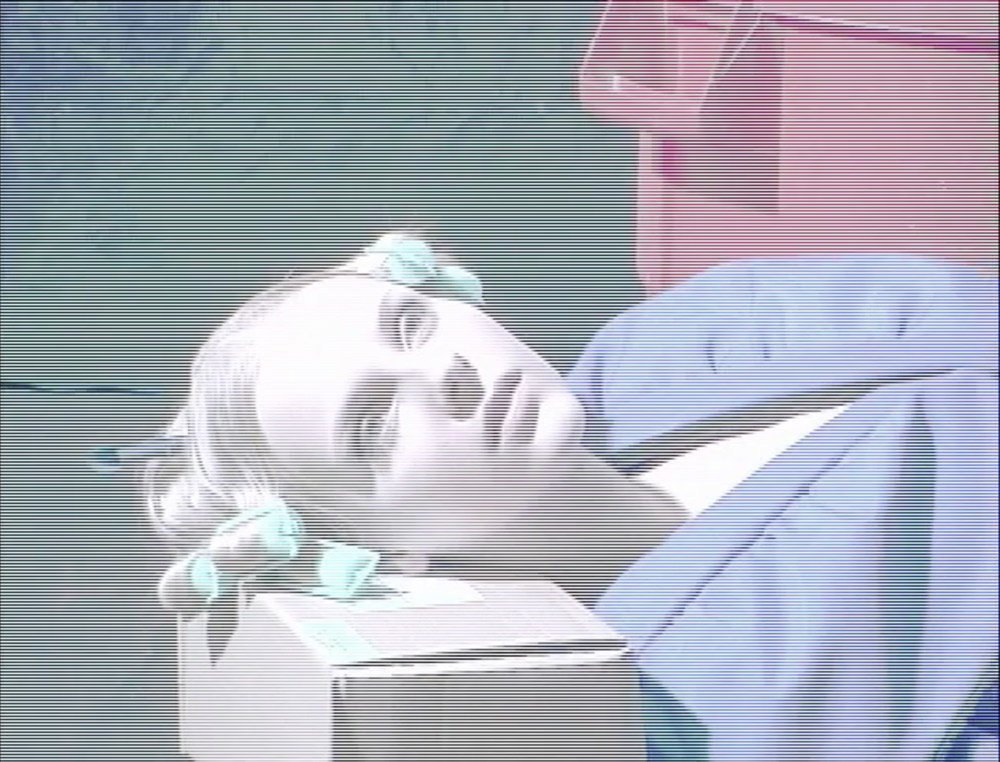
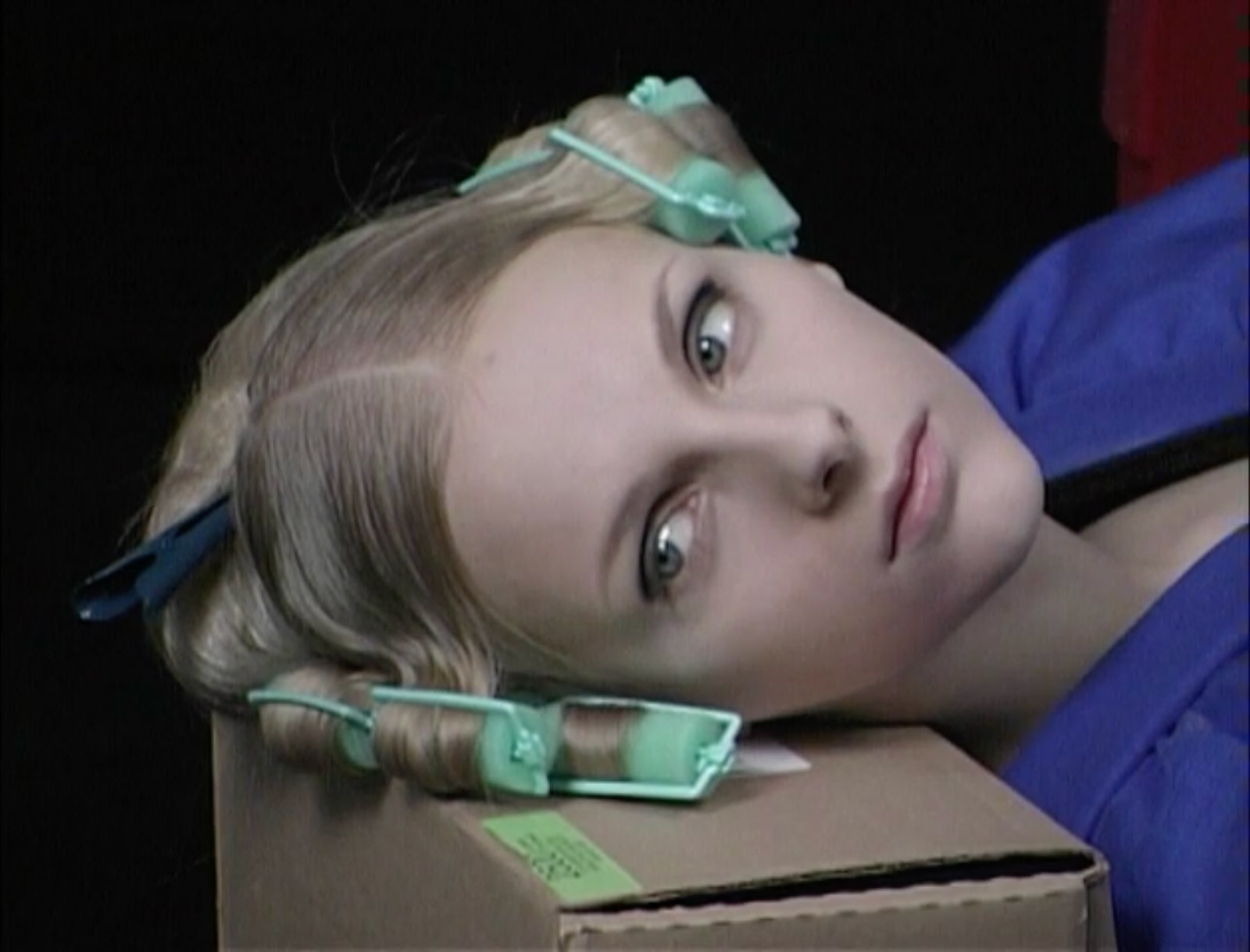
The film touches on absurdity. Approximately four minutes into it, the text “3:00” appears on the screen. The camera zooms in and out on the speaking Lotringer as he describes how it doesn’t matter where you jump into Mallermé’s poetry – even if you start from the beginning, its content will escape you. With its unaccompanied visual metaphors and irrational juxtapositions, Bernadette Corporation’s film has a similar ability to veil the subject from the viewer.
According to Lotringer, what we are left with from Mallermé’s poetry is a representation of how his mind works: “To understand his mind, you have to understand his form – like fashion, the form is the mind.” This surreal idea of fashion is reinforced and doubled through Bernadette Corporation’s film, which they themselves describe as: “A fashion film about the poetry of Stéphane Mallarmé and the colour white.” Lotringer says Mallarmé makes nothingness physical, giving it form. So does Bernadette Corporation in their cinematic fashion poem. Through countless transparent overlays and counterintuitive associations, they visualise surfaceness as a phenomenon. By filming absurd photoshoots and using fashion’s assembling practices in contrast to Lotringer’s form analysis, they indirectly depict how commodification is a process of abstraction that brings things, people and images to the surface. The film is an evocation of and an attempt to see the surface of nothingness: the transparent ice.
Lotringer describes how Mallarmé creates a sentence of four words for nothingness: “Aboli bibelot d’inanité sonore, abolish trifle of sonorous inanity.” For him, the sentence is four ways of saying nothing. While all the words mean something, each word is cancelled out by the others in adjacency. “Only a real connoisseur of disappearance can make things disappear,” he says with a smile, and that’s true also for surface in Bernadette Corporation’s film. Their criticism and celebration of the depthless reveals an in-depth knowledge of it, to be compared with that of surrealism.
The film is an evocation of and an attempt to see the surface of nothingness: the transparent ice
To Bataille, Richardson writes, a society without myth is a society without sacredness. The sacred, to him, is communication in its essence. A society without communication is not only a society in dissolve. It stops being a society, or more precisely, it becomes a society unable to form community. Returning to the idea of absence of myth, Richardson writes:
“The myth of contemporary society, therefore, was an ‘absence of myth’, since that society had deluded itself into believing it was without myth by making a myth of its very denial. […] Both Bataille and the surrealists were convinced that this was profoundly misguided – and dangerously so: contemporary society was as much in need of a mythical foundation as any other society, and by denying that fact it was simply making a fetish of its absence and denying part of itself”
As Hell Frozen Over orbits modes of absence, nothingness and the notion of surface, it provides a model for understanding how the absence of mythis a myth posing as absence. By doing so, Bernadette Corporation illuminates this last ruling myth of them all.
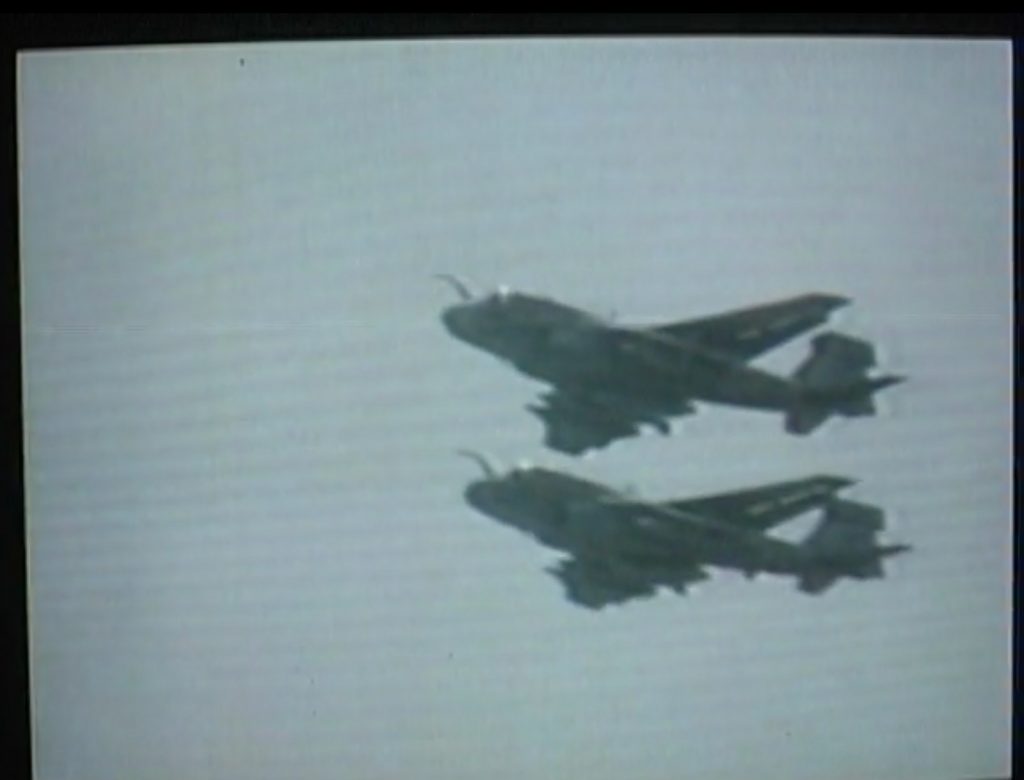

In a conversation with the figurative painter Ernst Yohji Jäger about surrealist currents in contemporary art, he tells me that you can understand his and his peers’ use of figurative expression and a more mythical visual world as a resistance to contemporary cynicism. His paintings are all subdued with a dreamlike filter. The matte, warm and dusty colours give them all a dreamlike glow. The people inhabiting the canvases are often in solitude. They turn their back on the beholder or are seen from the side. They seem occupied in melancholic contemplation. The many backs, turning faces and empty streets emanate mystery. The matte texture of the paintings only seems to enhance this. The beholder is left guessing narratives, which only allows the subconscious to mutate the portrayed everyday situations into fantasy.
Yohji Jäger’s paintings hold an offset temporality that connects them with paintings and motifs from another time, almost like an aestheticised nostalgia. The anachronisms are signs of a prevalent nostalgia for all the hopes for the future that were introduced with modernism and the avant-garde, but never realised, at least according to cultural theorist Mark Fisher. Nostalgia is still an image of the current, even though we see it as derived from the past. In a sinister world without collective myths, with all the world’s mysteries accounted for, Yohji Jäger’s dense dreamy environments can be read as acts of soft resistance and glimpses of a world beyond time.
the absence of mythis a myth posing as absence
Echoed within contemporary visuality, surrealism can be read as previous practical knowledge into the importance of myth to a society. This material lends us a gaze that reveals this illusion of the absence of myth. There is an ideological knowledge within the visual. We need only to learn how to read the signs.
| Text | Anna Weile Kjær |
| Imagery | Stills via Bernadette Corporation, Hell Frozen Over, 2000 |

